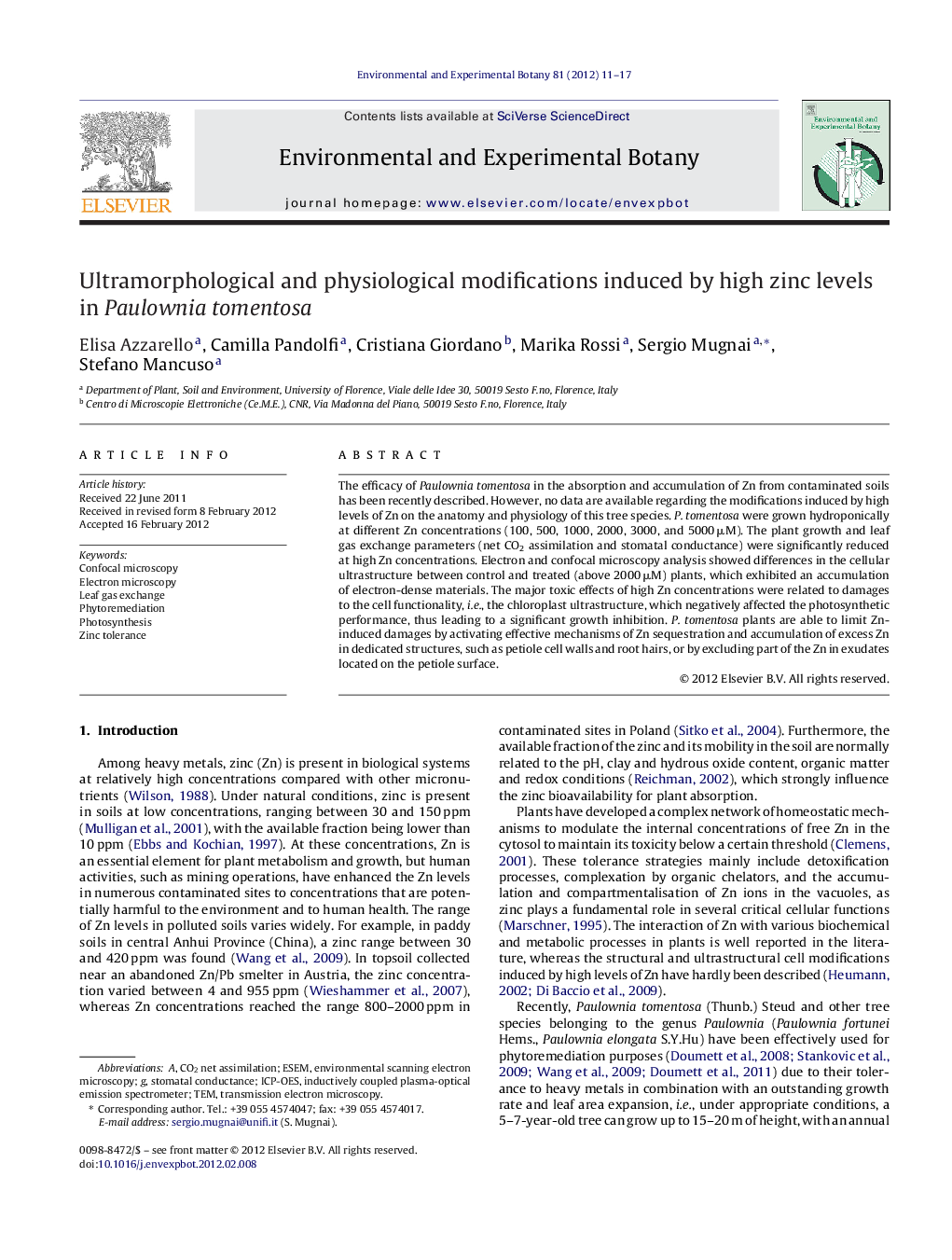| Article ID | Journal | Published Year | Pages | File Type |
|---|---|---|---|---|
| 4554639 | Environmental and Experimental Botany | 2012 | 7 Pages |
The efficacy of Paulownia tomentosa in the absorption and accumulation of Zn from contaminated soils has been recently described. However, no data are available regarding the modifications induced by high levels of Zn on the anatomy and physiology of this tree species. P. tomentosa were grown hydroponically at different Zn concentrations (100, 500, 1000, 2000, 3000, and 5000 μM). The plant growth and leaf gas exchange parameters (net CO2 assimilation and stomatal conductance) were significantly reduced at high Zn concentrations. Electron and confocal microscopy analysis showed differences in the cellular ultrastructure between control and treated (above 2000 μM) plants, which exhibited an accumulation of electron-dense materials. The major toxic effects of high Zn concentrations were related to damages to the cell functionality, i.e., the chloroplast ultrastructure, which negatively affected the photosynthetic performance, thus leading to a significant growth inhibition. P. tomentosa plants are able to limit Zn-induced damages by activating effective mechanisms of Zn sequestration and accumulation of excess Zn in dedicated structures, such as petiole cell walls and root hairs, or by excluding part of the Zn in exudates located on the petiole surface.
► Growth in Paulownia was reduced at [Zn] > 1000 μM. ► An accumulation of electron dense materials was evident in treated plants. ► High [Zn] damaged chloroplast structure and negatively affected photosynthesis. ► Sequestration, accumulation and exclusion of Zn excess limited Zn-induced damages.
